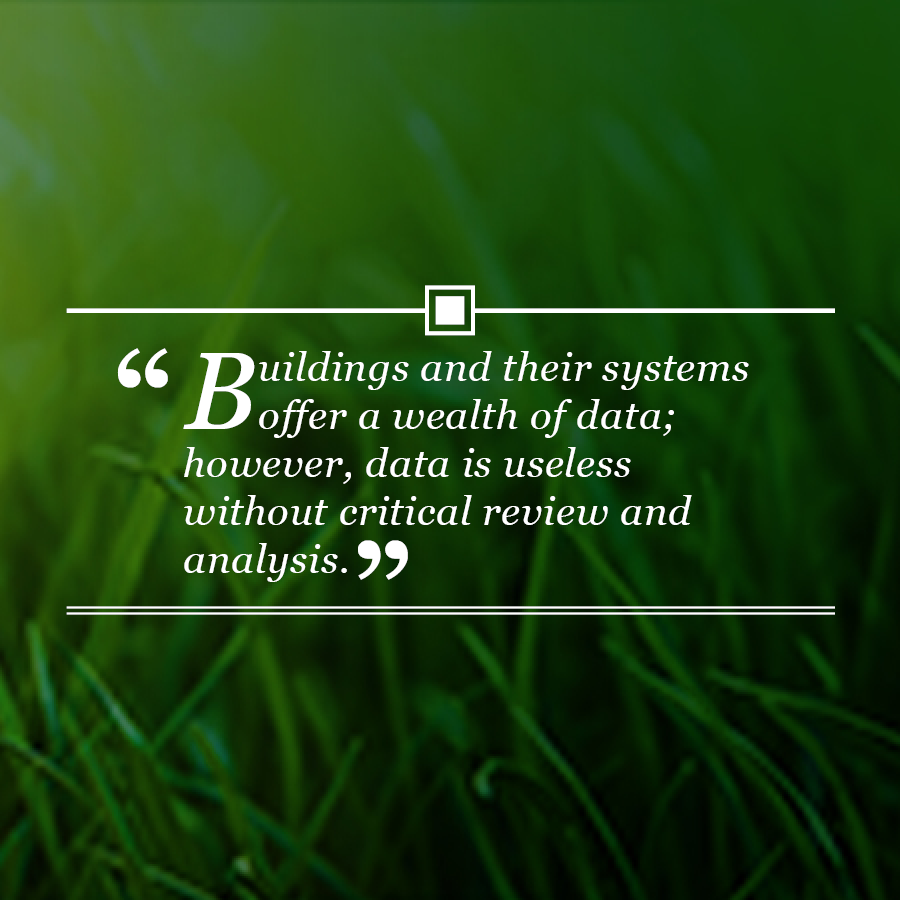
We live in a digital, data-driven society. In an interview in 2019, Antonio Neri, president of Hewlett Packard Enterprise Co., stated, “We live in an incredible time — every business has been disrupted by the digital transformation. The core of that transformation is the explosion of the data we are creating. We call data as the new currency.” Buildings and their systems offer a wealth of data; however, data is useless without critical review and analysis.
These not only include energy usage, but also asset maintenance, indoor environmental quality and sustainability initiatives, such as the reduction of greenhouse gas emissions.
For many managers, the most important metrics relate to energy consumption and demand. If not already established, energy baselines need to be developed for their facilities. The International Organization for Standardization’s ISO 50001:2018 – Energy Management Systems – Requirements with Guidance for Use requires energy baselines be developed and defines these six steps:
- determine boundaries: building, campus, business sector, etc.
- establish the baseline period — typically one year
- gather energy data (consumption by fuel) — create an energy balance
- determine factors heavily influencing energy consumption
- calculate energy use intensity (EUI)
- track and report progress

Developing an accurate baseline of energy use is critical and should subdivide the demand and consumption between the various loads within the facility. Recent editions of the most adopted energy codes (ASHRAE Standard 90.1-2022: Energy Standard for Sites and Buildings Except Low-Rise Residential Buildings and the 2021 International Energy Conservation Code) include requirements for submetering to help identify this data. Once developed, the most common baseline metric is EUI, calculated as the annual building energy use (measured in kBtus) divided by the total gross area of the building (measured in square feet).
The accuracy of the energy baseline is important in benchmarking against peer facilities. There are several commonly used benchmarking tools, all employing facilities’ EUIs in some capacity. These include the U.S. Environmental Protection Agency’s (EPA) Energy Star Portfolio Manager, the U.S. Department of Energy’s Building Energy Asset Score and ASHRAE’s Building Energy Quotient. These tools help in comparing the energy performance of similar facilities.
In addition to energy baselines and benchmarks, there are additional metrics — energy performance indicators (EnPI) — for facilities with specific uses. ISO 50001 defines an energy performance indicator as “a quantitative value or measure of energy performance, as defined by the organization.” Examples of EnPIs include:
- BTU per unit of product – assembly plant
- BTU per pound of product – manufacturer
- BTU per number of beds occupied – hotel or hospital
- power usage effectiveness (PUE) – data centers
The EPA works with industry to develop sector-specific EnPIs. These determine how efficiently a whole plant uses energy compared to others in its industry.
Next month, I will discuss common metrics associated with asset maintenance, indoor environmental quality and a reduction in greenhouse gas emissions. Hanson has a number of dedicated engineers and energy management professionals with experience in developing metrics and analyzing same for clients and their facilities. For further information, contact Bob Knoedler at rknoedler@hanson-inc.com or Bill Bradford at bbradford@hanson-inc.com.